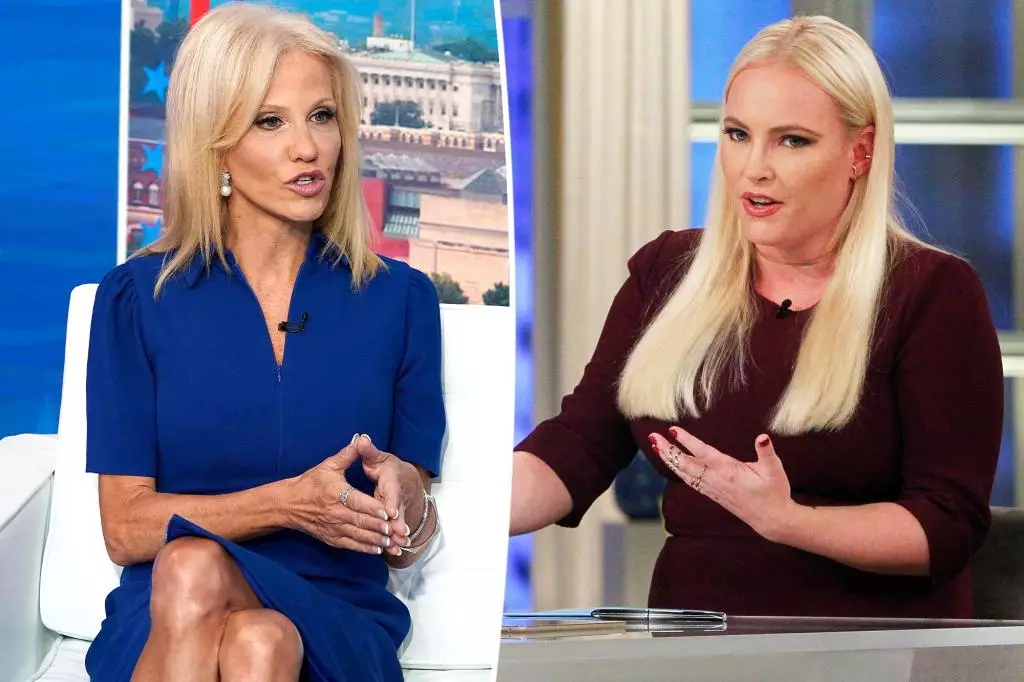The media landscape often features high-tempered exchanges and backstage dramas, but few incidents have garnered as much attention as the altercation between Kellyanne Conway and Meghan McCain at a recent Washington Post event. This pivotal moment, steeped in tension and emotion, raises critical questions about public personas, personal boundaries, and the ever-blurring lines between professional and personal matters.
At a panel moderated by the Washington Post and hosted under the auspices of the Women’s Summit, former “View” co-host Meghan McCain and Conway shared the stage with Minyon Moore, the designated host of the upcoming 2024 DNC Convention. While the panel discussion addressed various issues, the real drama unfolded in the green room afterward. The environment was charged; two powerful women, each with strong opinions and public personas, found themselves in close proximity, with unresolved tensions inevitably bubbling to the surface.
Sources recount a vivid clash: Conway allegedly confronted McCain with pointed critiques about her personal life, labeling her comments regarding Conway’s marriage as “disgusting.” The scene depicted a classic confrontation, with bystanders caught between differing accounts. On one hand, Conway’s supporters describe her as assertively yet professionally communicating her discontent, while on the other, some observers painted Conway as erupting into a passionate tirade.
As the tension escalated, it is reported that McCain felt increasingly uncomfortable, repeatedly asserting, “You’re in my space. I’m uncomfortable.” This reaction highlighted the complexities of communication between two strong personalities. McCain, drawing from her own painful experiences with Donald Trump—which included disparaging comments about her late father—seemed caught off-guard but resolute in her defense. To bring the discourse back to personal boundaries, a profound inquiry emerged: how far should public figures go in voicing their discontent toward one another?
Eyewitness accounts of the exchange ventured into varied territories, with some insisting that Conway remained composed while making her grievances known, while others illustrated a more dramatic interpretation of the events. This discrepancy emphasizes how perceptions can drastically shift based on individual biases or subjectivity. Such episodes illustrate the fine line that separates assertiveness from aggression in public dialogues, especially when the participants share significant political and personal histories.
What adds layers to this saga is the ironic context in which it plays out. Both Conway and McCain inhabit intense political arenas and have witnessed their fair share of public scrutiny. Whether through Conway’s role as a senior advisor to Donald Trump or McCain’s outspoken critiques of the former president, both women have cultivated, albeit separately, a rich tapestry of political engagement marked by emotional stakes. Yet, the very need to protect their personal lives—particularly their respective familial connections—seems to play a crucial role in this encounter, underscoring the pressures they face.
When the dust settles, both Conway and McCain emerge not just as political figures, but as women navigating their emotional terrains amidst a landscape strewn with historical narratives and personal injuries. The stark reminder remains that in a world dominated by social media and 24/7 news cycles, every personal exchange has the potential to reverberate well beyond the immediate context, affecting not only the individuals involved but also the larger societal discussions about boundaries, respect, and public discourse.
While the anecdote surrounding Conway and McCain ultimately encapsulates a dramatic moment between two formidable women, it serves as a broader commentary on the nature of political discourse and the expectations placed upon women in the public eye. The insistence on emotional fortitude often clashes with personal boundaries, a dichotomy that leaves room for further analysis.
As society continues to grapple with themes of respect, authenticity, and political discourse, the lessons from this encounter present opportunities for reflection. How can public figures engage in conflicts while maintaining boundaries? How might they balance assertiveness with empathy? The dialogue continues, now peppered with the echoes of that tense exchange, a microcosm of the intricate relationships that define our modern political landscape.

